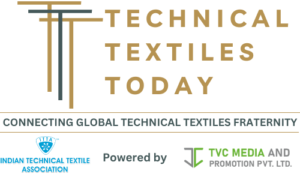Global CAGR projected at 5.39% from 2025–2034
Source: Polaris Market Research | July 2025
Engineered fibers are the silent powerhouses behind modern innovation—from performance-driven apparel and reinforced construction to cutting-edge aerospace components. These materials, designed for exceptional strength, durability, and customization, are revolutionizing how industries think about performance, safety, and sustainability.
According to a recent report by Polaris Market Research, the global engineered fibers market, valued at USD 11.98 billion in 2024, is expected to grow at a CAGR of 5.39%, reaching USD 20.23 billion by 2034. This surge is largely propelled by increasing demand in the automotive, aerospace, construction, and healthcare sectors.
“Engineered fibers are no longer niche—they’re becoming central to how industries design for the future,” noted Polaris Market Research analysts in the report.
“Whether it’s reducing vehicle weight, enhancing fuel efficiency, or developing sustainable clothing, the applications are widespread and expanding rapidly.”
What Are Engineered Fibers?
Engineered fibers are advanced synthetic or modified natural fibers tailored to meet specific mechanical, chemical, and thermal requirements. Developed through sophisticated manufacturing processes, these fibers offer qualities such as:
- High tensile strength
- Thermal and chemical resistance
- Lightweight flexibility
- Design versatility across shapes and forms
Key Types of Engineered Fibers
- Carbon Fibers: Lightweight with high stiffness, widely used in aerospace, sports equipment, and automotive sectors.
- Aramid Fibers (e.g., Kevlar, Nomex): Known for impact resistance and flame retardancy, used in protective gear and military-grade components.
- Glass Fibers: Economical and strong, ideal for construction, boats, and insulation.
- Basalt Fibers: Derived from volcanic rock, offering eco-friendly thermal and corrosion resistance.
Applications Across Industries
Engineered fibers are now essential in various domains:
- Automotive: Used in structural components, panels, and interiors for lighter, safer vehicles.
- Aerospace: Applied in aircraft frames, wings, and interiors to boost fuel efficiency.
- Construction: Reinforce concrete and infrastructure for greater durability and reduced environmental impact.
- Textiles & Apparel: Powering innovations in fire-resistant clothing, sportswear, and outdoor gear.
- Healthcare: Enable prosthetics, implants, and sutures with biocompatibility and precision.
Future Outlook
The engineered fibers market is evolving with the rise of bio-based, recyclable, and smart fibers—capable of responding to heat, moisture, or movement—driving innovation in wearables, defense, and medtech. As sustainability goals and lightweighting trends gain momentum, engineered fibers are set to become the backbone of next-gen materials
Conclusion
Engineered fibers are no longer just supporting materials—they are defining the performance, design, and durability of tomorrow’s solutions. As industries invest in smarter, lighter, and more efficient technologies, these advanced fibers are poised to lead the material transformation.
🔗 Read Full Report & Download Sample
